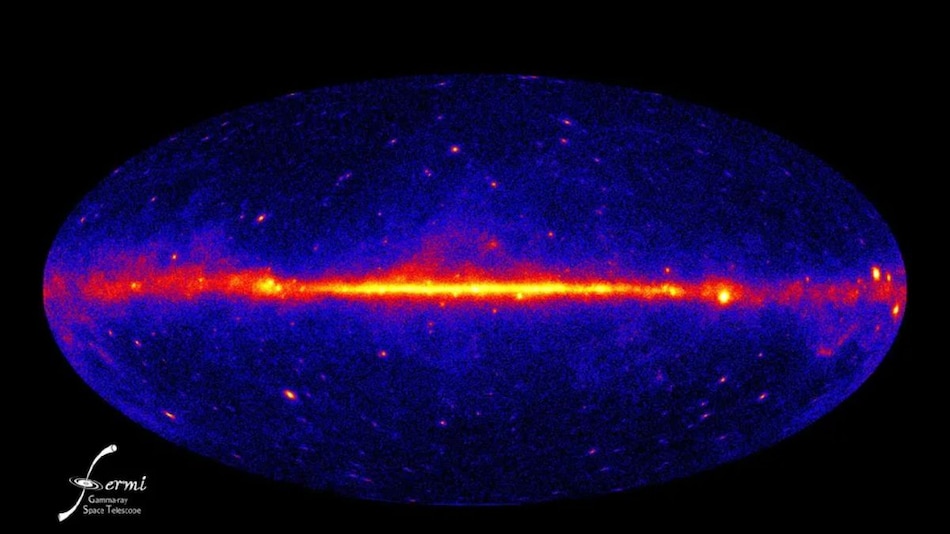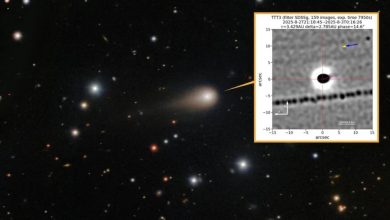A new study suggests dark matter near the Milky Way’s center is flattened, possibly explaining its mysterious gamma-ray glow.

Simulations show flattened dark matter matching Milky Way’s gamma-ray glow
Click Here to Add Gadgets360 As A Trusted Source

For more than a decade, astronomers have been puzzled by the strange high-energy glow that blazes from the centre of the Milky Way, an excess of gamma rays that cannot be explained by known sources in its vicinity. Now, new computer simulations suggest that instead of being spherical, the dark matter around galaxies’ centres may be “flattened,” potentially solving part of the mystery. The findings, described on 16 October in Physical Review Letters, suggest that this discoidal arrangement can create a radiation pattern matching what has been seen. This potentially revives a long-disputed theory linking dark matter to the Milky Way’s bright central glow.
Flattened Dark Matter May Explain Mysterious Gamma-Ray Glow at Milky Way’s Core
As per a report from the Leibniz Institute for Astrophysics Potsdam, the research was led by Moorits Mihkel Muru in collaboration with the University of Tartu in Estonia. The team used advanced HESTIA simulations to model how dark matter behaves under the influence of galactic forces. Their findings show that past mergers and gravitational interactions could distort dark matter into a flattened shape, closely matching the gamma-ray pattern captured by NASA’s Fermi space telescope, which has long detected an unexplained excess of such energetic light.
A new study counters the idea that gamma rays from dark matter collisions are a result of millisecond pulsars. This suggests the geometry of dark matter could explain the unprecedented glow.
The researchers traced out that not all the dark matter around our galaxy is uniformly spherical; it could also be more dynamic. Due to the impact of galactic torques, such as those from the stellar spheroid in our galaxy.
Astronomers claim that the gamma-ray excess has been attributed to dark matter. So it needs to take more evidence from future observatories to trace out dark matter interactions and pulsars. This insight comes from the actual nature of dark matter.








